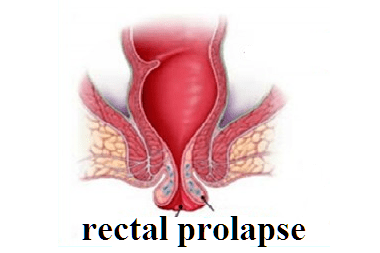Digestive system >>>> Rectal prolapse
Rectal prolapse.

The anatomical location of the change of the rectum, leaving outside of the anus is called rectal prolapse or archoptosis. Most often, loss occurs in elderly people, but in general statistics, the disease can be observed in different age groups. Among the factors predisposing to prolapse of the rectum are:
- Excessive pushing during bowel movements,
- Bowel obstruction and intestinal intussusception,
- Attempts at childbirth,
- Weakening of the muscles holding the rectum,
- Anatomical features of the structure of the skeleton in the pelvic region,
- Dramatic weight loss.
- Rectal prolapse can be triggered by heavy lifting, excessive physical exertion on the peritoneal area, strained coughing or sneezing, chronic constipation, and frequent use of cleansing enemas.
Signs of rectal prolapse:
- sharp pain in the abdomen, aggravated at the time of bowel movements, walking,
- feeling of a foreign body in the anus,
- false urge to defecate,
- visible to the naked eye (or determined by touch) the location of the rectum (completely or its distal part) outside the anus,
- mucous discharge
- fecal incontinence.

At the initial stages of the disease, the prolapsed rectum can be adjusted independently, but over time, the progressive disease leads to prolapse of the rectum, not only at the moments of defecation, but also when the body is in an upright position.
Treating a prolapsed rectum requires surgery, as manual repositioning of the prolapsed rectum is only a temporary measure to correct the problem. Modern methods of surgical intervention for prolapse depend on the age of the patient, his state of health, and the causes of rectal prolapse. Laparoscopy is a modern minimally invasive method. According to the indications, resection of the rectum, resection of the large intestine, plasty of the anus, fixation of the prolapsed rectum with a mesh to the upper third of the sacrum or to the longitudinal ligaments of the spinal column are performed.

Read

Read



























